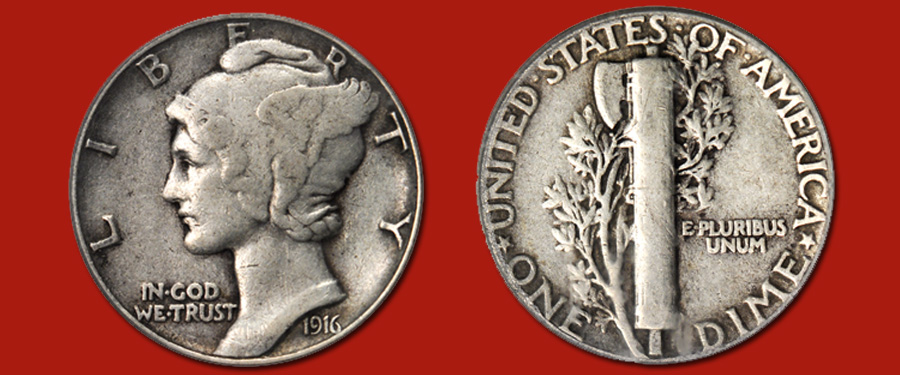
A renaissance-like era of U.S. coinage designs began with the Saint-Gaudens Indian eagles and MCMVII High Relief double eagles of 1907, and ended in 1916 with the advent of the Mercury dime and Walking Liberty half dollar designs by A.A. Weinman, as well as Hermon MacNeil’s Standing Liberty quarter design type. During that span, all of America’s small change was redesigned, from the cent up through the half dollar, and the gold denominations also saw new designs.
Patterns sometimes heralded things to come, but mainly they were just that, patterns, and few of the thousands of different patterns produced since 1792 have become actual circulating coinage designs. Not so with Weinman’s 1916 Mercury dime patterns. The variety we offer here, Judd-1982 (formerly Judd-1794 in early editions of the Judd reference), is remarkably similar in appearance to the adopted Mercury dime design of 1916. The few pattern Mercury dimes known all show signs of circulation. Indeed, the specimen we offer in our upcoming February Americana Sale was no doubt rescued from pocket change by an eagle-eyed collector after it had been worn down to VF.
What sets this specimen apart is its status among PCGS-graded examples. It is the only example of Judd-1982 certified by PCGS in any grade! Coins don’t get much rarer than that! We suspect it will be some time before we – or anyone else for that matter – offer a pattern 1916 Mercury dime to the collecting community. Your ownership of a pattern Mercury dime may very well depend on your bidding when this piece crosses the auction block. Be prepared to bid liberally if you mean to add this rarity to your pattern collection or Mercury dime portfolio.





